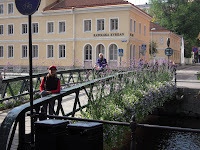This is a thesis in Strategic Management Journal. The paper shows relation between strategic intent, top management, and human capital and social capital, organization and workers, and tries to make a model of it from an international company’s case study.
The model consists of follows;
・Objective Function(strategic intent)
・Source of Variation (all employees)
・Units of Selection (strategic initiatives, human and social capital)
・Agents of Selection and Retention (people working on strategic initiative)
・Administrative Systems (formal structure and organizational routines)
In this article, the model was inspected with the example of Oticon, Danish hearing aid company, and its reconstructing strategy and organization. The example is so interesting because it shows “Structure follows Strategy”. But it is so complex that author could not theorize the case sufficiently. I think studies of management became more difficult if more close it looks example. From the beginning, it is impossible to theorize activities of human beings. By the way, this thesis is hard to understand for me.
URL:www.thinkoticon.com/












































